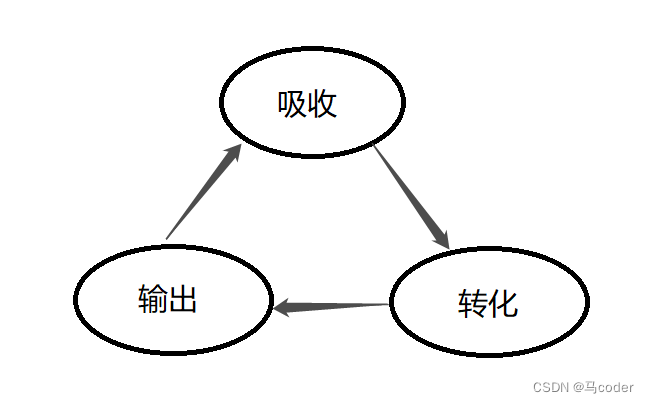There is a saying that is very good, when you live to be old, you have to learn. In today's era, the replacement of old and new knowledge is getting faster and faster, especially in IT. Many times, it may be that a framework or technology you have mastered has not waited for you to fully understand it, and new IT technologies have emerged on the market.

Whether it is out of curiosity or compulsion, quickly mastering a new IT technology for oneself is indeed a barrier that cannot be bought. However, no matter what IT technology you learn, there is basically the same methodology after all: absorption, transformation, and output cycle.

Splitting out each link of the cycle is actually the following points.
1. Understand the basic knowledge required for the goals of the current stage
After clarifying the learning goals of the current stage, you need to understand the basic knowledge required, and what is there to get started. For IT technology, this may mean understanding the basic principles of computers and the basic syntax of operating systems and programming languages. If you are a beginner, you can learn these contents from related books or online video tutorials. Understanding the basics is fundamental to successfully learning IT technology.
Of course, when you first start learning, there is no need to learn it in detail. First, go through it once to get an initial understanding, and then get familiar with it the second time and N times. This approach quickly gets you to the basics you need today.
2. Find learning resources based on stage goals
There are many ways to learn IT technology. It may be through self-study, taking online courses such as CSDN, or even spending a few dollars on Pinxixi, and you can buy a lot. In addition, there are many online classes in many universities, and there are also many free recorded courses for you to learn. Of course, when selecting suitable learning resources, you must be clear about your current goals, whether it is to improve basic knowledge, find a project to practice, or something else. Everything starts from your own learning goals.
3. Make a study plan
It is very important to have a study plan. This will help you stay on top of learning without being distracted by many other factors. By planning and clarifying the goals of each stage of learning, students can clearly understand their progress and better overcome the uncomfortable period in the learning process. Consider setting weekly goals in the study plan, and self-evaluate after completing the tasks, and make appropriate adjustments when appropriate.
In order to prevent your own inertia or procrastination, you can find some like-minded people around you or online, and supervise and complete the plan you set together. The effect is really good.
4. Practice
The so-called practice brings true knowledge, especially in many IT fields. Some grammar and skills may feel ordinary when you learn them, but once you actually use them in the project, you will find a deeper understanding. If you need it for work, you can just apply it. If you don’t need it for the time being, you can order some interesting hands-on projects for yourself. Once you use it, you will find that everything starts to become proficient and interesting.
5. Look for practical opportunities
To truly master a technique, one must eventually experience a process of growth in actual combat. Therefore, looking for actual combat opportunities is also a very important step. If you can’t use it in your daily work or life, you can also participate in some community activities or volunteer activities to help others solve some practical problems, and even participate in the development of open source software. These hands-on opportunities can help you expand your experience, hone your skills, and even polish your resume.
With the accumulation of practical experience, you will gradually find that your goals in the current stage are basically completed, and you can prepare for the next cycle.
6. Continuous improvement and learning
Based on the current level, start to formulate the absorption, conversion, and output cycle of the next higher goal. After all, learning IT technology is not an easy task, so don't expect to get perfect results in a cycle, after all, most of us are not geniuses. Put your attention on the dimension of time and be friends with time. In the process of continuous learning and practice, it will help you acquire a more comprehensive skill set and a better ability to control your learning goals.
In short, no matter what new IT technology you learn, the core is how to quickly complete multiple rounds of absorption, transformation, and output cycles. Keep splitting the goal into multiple such small loops to execute, and you will find that it seems to learn everything very quickly.
